Every homeowner wants a well-maintained lawn. However, it can be challenging to maintain an entire yard, especially the spaces along the fence. Can you use an edger in this area? How will you do it without causing damage? We've researched this question, and here's what we found out.
You can use a lawn edger to cut grass along a fence. However, you must be careful and know the proper steps to avoid damaging the fence. You can also use other edging devices like a string trimmer to cut grass under the fence, which your large lawnmowers and edger can't reach.
You're likely to create a major mess if you don't know how to properly cut the grass along a fence. Continue reading as we give you the right ways to cut grass along a fence without damaging it.
![trim-lawn-edge man gardener worker, Can You Use An Edger Along A Fence [Without Causing Damage]?](https://gardentabs.com/wp-content/uploads/2022/10/Can-You-Use-An-Edger-Along-A-Fence-Without-Causing-Damage.jpg)
How A Lawn Edger Works
Edging is as important as mowing because it will give your lawn a clean and neat look. This process will be very easy if you know how a lawn edger works.
A lawn edger works by digging a straight line through the earth to define the boundary between the grass and another section of the garden.
How To Use Along A Fence
No one wants to see a beautifully edged lawn and discover that the fence is full of scratches from the trimming equipment. Here are the steps to use a lawn edger along a fence line without damaging the fence.
- Place the lawn edger at the side of the fence's base.
- Turn on the edger and give it some time to warm up.
- Carefully push down the edger to the fence row. Remember to go slow so it will not touch the fence.
- If the fence has a space under it, you can tilt the edger but be careful not to put it in contact with the fence.
- Pause on locations where there are stones and hard surfaces because they can damage the device.
- Repeat the process until you achieve a clean edge.
Tips For Cutting Grass Along Fences
While it might seem difficult to trim the grass next to a fence without ruining it, there are a few things you can do to lessen the risk.
1. Adding Borders
You need to use metal, plastic, or bricks as a border to prevent the grass from spreading toward the fence. This is a good step, so it will not be difficult for you to cut along the fence.
However, make sure that whatever you use is sturdy enough to support the weight of the lawnmower.
2. Sectional Mowing
This step is also important if you don't want to add borders to your lawn. You should section the grass you need to mow, going from one end of the fence to the another.
This may seem time-consuming, but it will help when you're cutting the grass along the fence.
3. Trim Along Fences
There are some specific trimming strategies. These strategies depend on the type and material of your fence. Here are some of them:
Trimming Along A Solid Or Slated Fence

The wire of a trimmer can leave scratches on solid or slated fences and gradually chip away at the fence. One way to prevent this is to put your trimmer on a low setting so it will lower the pressure of the trimming wire.
Trimming Along A Chain-Link Fence
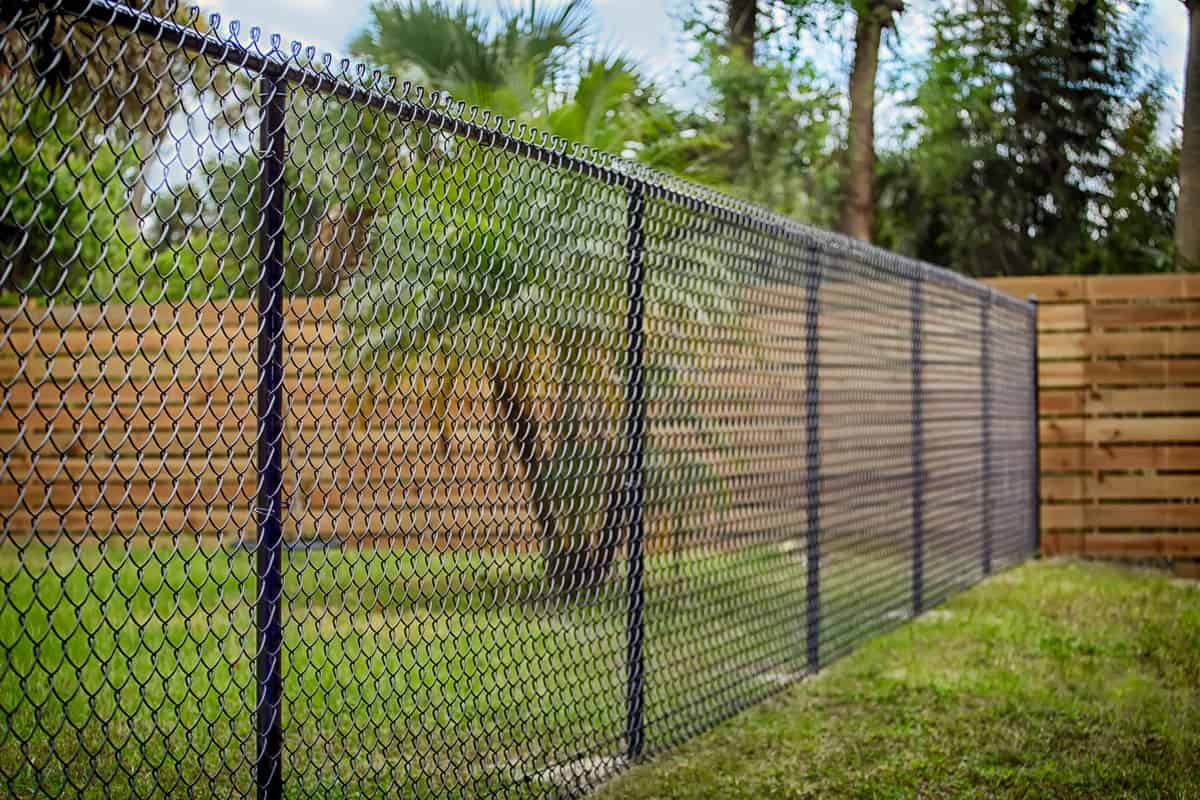
Chain fences have many spaces in between, giving more space for grass to grow and attach to the fence. The grass will be accessible for the trimmer but will not be friendly for the trimmer's string.
To carefully cut in between the links, you should use a weed trimmer on the lowest power setting, close to idle. This will prevent the trimming wire from breaking quickly, minimize damage to the fencing, and cleanly cut the grass.
Cutting Along A Rail Fence
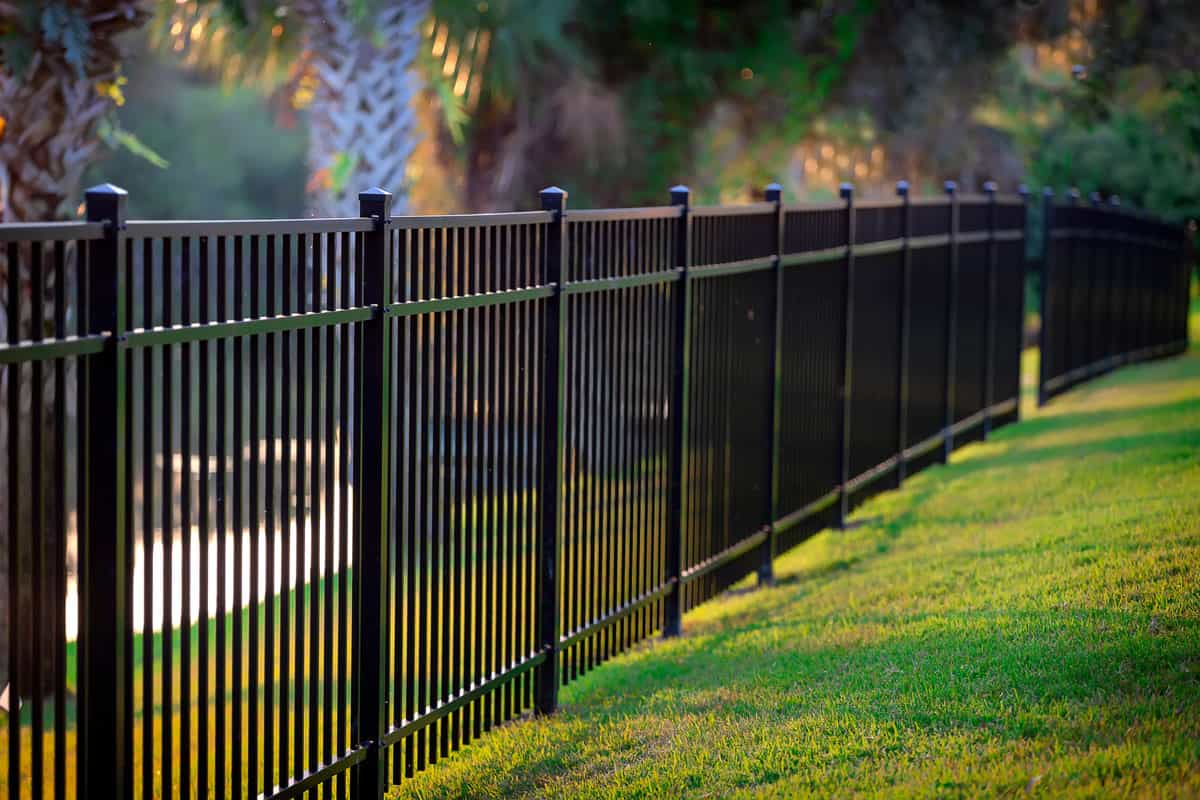
Rail fences have spaces on the bottom, making it harder for the edger to reach. These fences are commonly made up of wood or metal.
The easiest approach to trimming weeds under and along these fences is by using a tractor or riding mower equipped with a fence trimmer attachment. They are more common in yards with more space.
Click here to see this hedge trimmer on Amazon
4. Use Trimming Devices
Trimming grass by hand is time-consuming. So investing in good quality trimming devices will not only save you time but also money.
Lawn Edger
A lawn edger is intended to cut and outline the boundary between your grass and any adjacent flowerbeds, driveways, or sidewalks. Although it can be used to cut grass along fences, it could still damage a fence.
Also, a lawn edger is not good for cutting grass under a fence because it is bulky.
Click here to see this lawn edger on Amazon
String Trimmer
One valuable tool for trimming grass along and under the fence is a string trimmer. It has a flexible string that helps cut grass even in hard-to-reach areas. It's also great for trimming in tight spots and around obstacles.
Click here to see this string trimmer on Amazon
5. Go Slow
If you're want to achieve a neat, clean yard, you need to take your time and go slow, especially when edging. Going too quickly increases your chance of making errors that could harm your fence or yard.
6. Cut At An Angle
One excellent method for cutting the grass next to the fence is to adjust the angle of your lawn mower. If you don't take extra care near the fence line, you run the chance of cutting the grass too short, and you don't want that to happen.
Push your lawnmower along the fence line with the blades pointed away from the fence. In this way, you will be able to prevent the fence from scrapes from the blades.
7. Protect The Fence
Putting metal or plastic flashing along a fence line is a great way to protect your fence. Moreover, you will not have to worry about hitting or scratching the fence when mowing and edging season comes.
How Do You Do Landscape Edging?
Landscaping adds highlights and beautifies your yard. One of the things you can do to your lawn to boost curb appeal is landscape edging.
There are different ways how to do landscape edging. Here are some of them:
Metal Edging
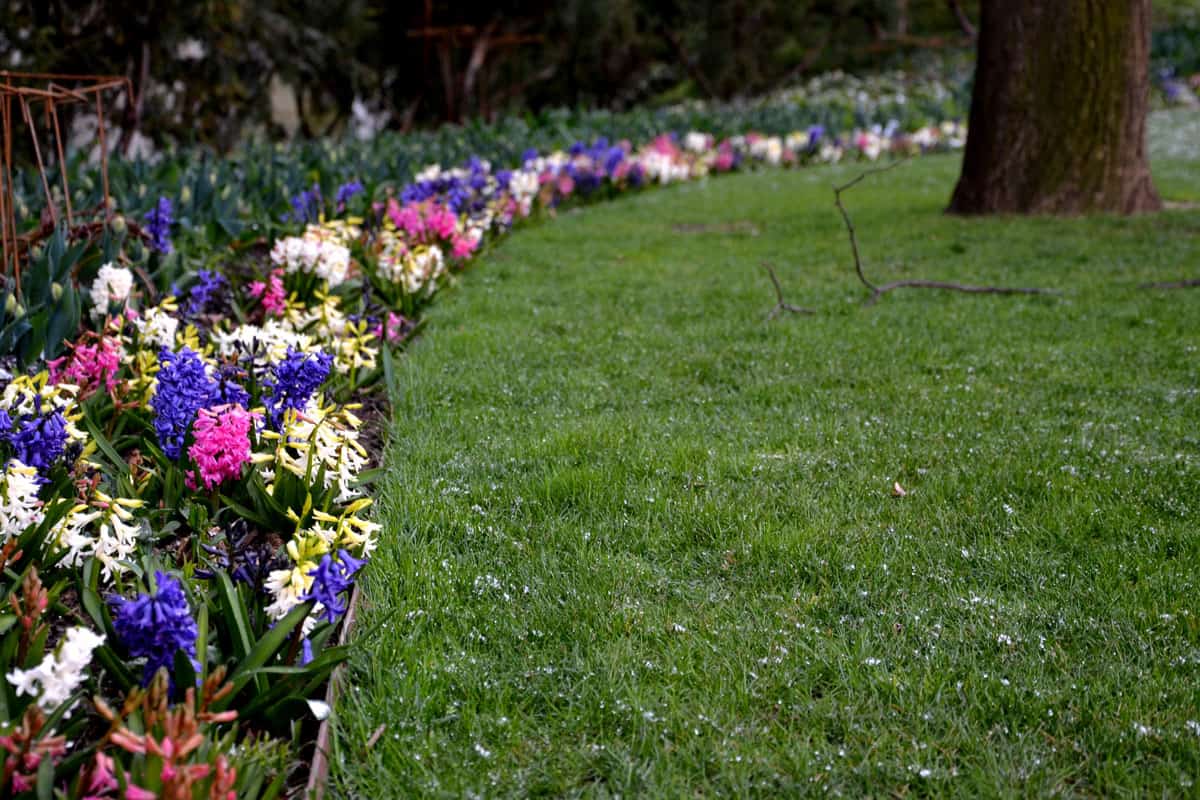
As implied by its name, landscape edging uses metal. It makes an invisible border because you need to dig the border to install the metal. The metal should be four inches deep to be an effective separator.
The expansion of roots is prevented by the metal lawn edging, which bends readily into flexible, elegant curves. Moreover, if there are pests that you need to keep out, you might want to think about installing flower bed fencing.
Click here to see this metal garden edging on Amazon
Stone Or Brick Edging

Stones and bricks are popular edging options. They can be used to create a minimalist effect while providing a neat border. They are also ideal if you want a wider border between the grass and the flower beds.
A wide border allows an edging device to roll along and make a cut. Plan where you want to install the bricks for easy access the next time you cut grass.
Raised-Bed Edging
If you want landscape edging while highlighting your garden, you can try raised-bed edging. This type of edging provides borders between the grass and the garden and adds depth and texture to the overall look of your lawn.
Fence Edging
You can also consider using a fence for low-growing shrubs. The shrubs will blend with the fence, which will serve as a border. This will give a more defined but more natural-looking edge to your garden and lawn.
How Do I Keep My Fence Line Clear?
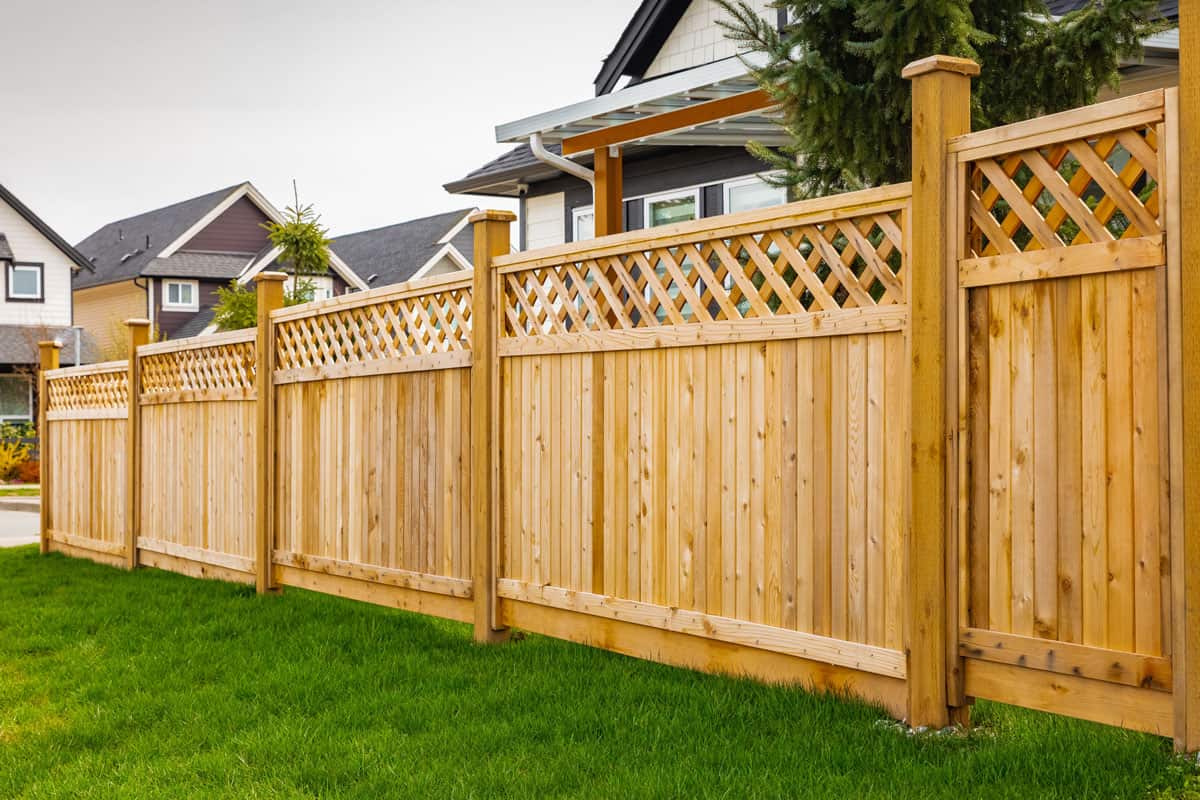
You might be focused on maintaining the entrance of your lawn and neglect the fence line. But keeping your fence line clear is important and promotes safety. You can keep your fence line clear using a lawnmower and trimmer.
However, if the grass and vines growing around your fence line are wild, and you need to mow them frequently, you can use a non-selective herbicide. The chemicals can kill wild grass, vines, and bushes, so you can easily clean them.
Click here to see this herbicide on Amazon.
How Do I Keep Trees From Growing On My Fence Line?
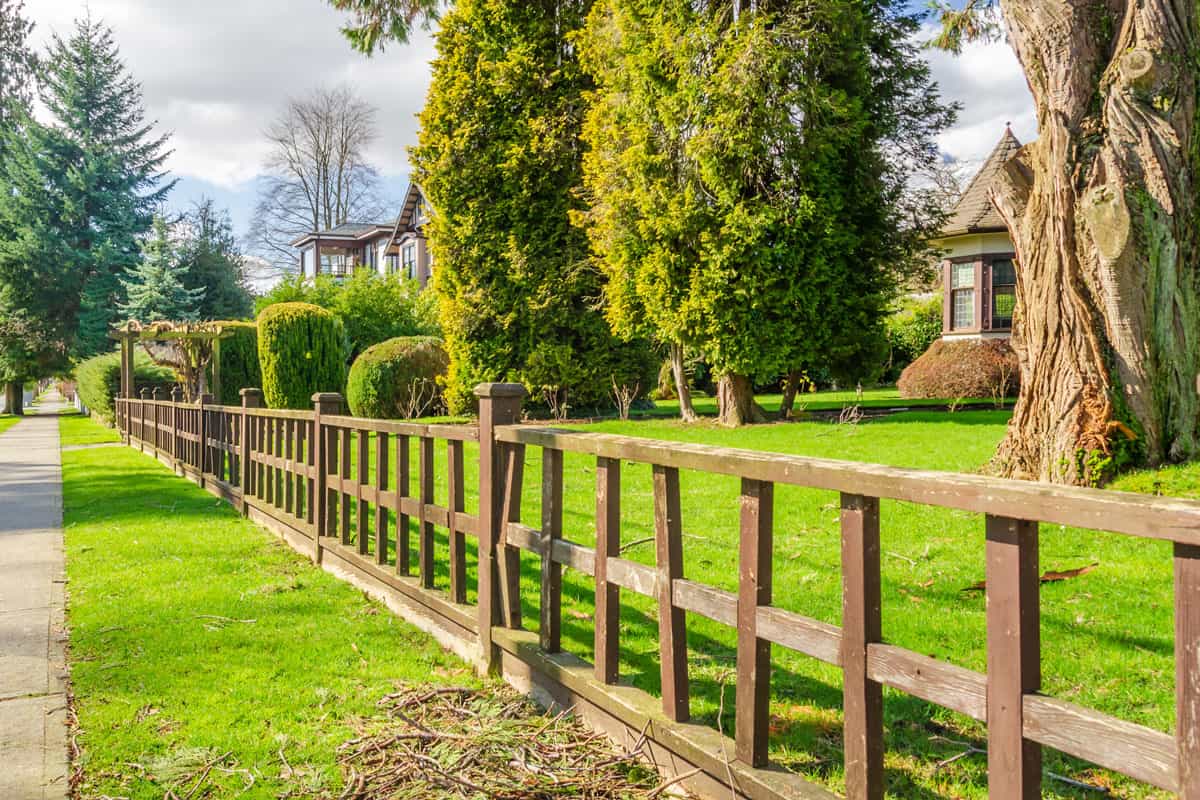
Trees near the fence line can damage your lawn. The trees can rob the soil of sunlight and nutrients.
Here are some of the things that you can do to prevent this from happening:
- Ensure your lawn has a 3-foot clearing, with only grass permitted to grow on either side of the designated perimeter. Mulch could also be used to surround your fence.
- Remember that large trees have extensive roots, and if they begin to grow on the fence, they may cause damage. Remove any branches dangling over your fence, or better yet, cut the tree down entirely.
Final Thoughts
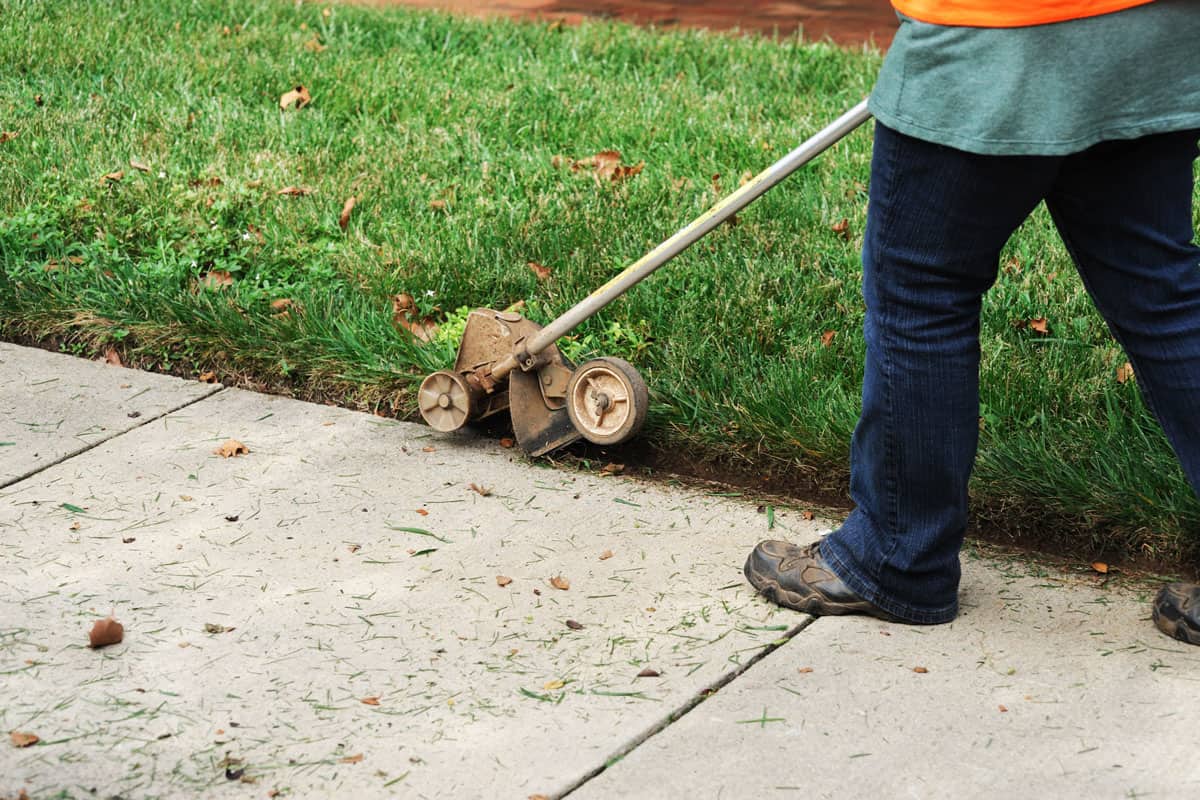
A fence defines a yard's boundaries and serves as a barrier. If you're trying to care for your lawn and you have fences, then it will be difficult to use a lawnmower.
Although an edger can cut grass along a fence, it will not be as efficient when you cut grass under the fence. A string trimmer can be an alternative. You should be cautious when using cutting device to prevent damage to youself and your lawn.
If you find this article helpful, you can also check out these posts that may interest you:
How Often Should You Edge Your Lawn?
Should You Edge Your Lawn Or Mow First? [What You Need To Know]






If you find that your soil is unstable or drains poorly, then you might need to do some remediation before installing your edging. BaseCore Geocells are a fantastic DIY option for making sure your garden is secure.